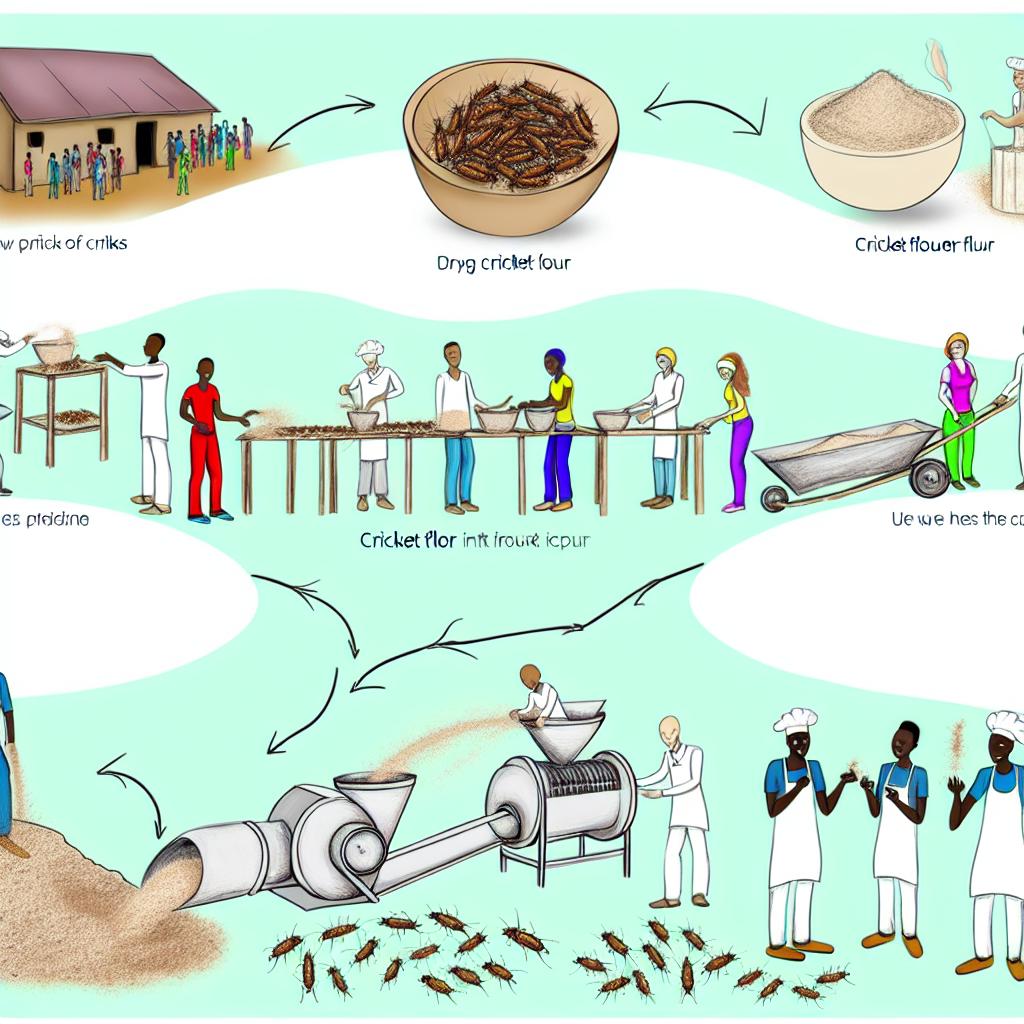Introduction to Cricket Flour
Cricket flour is an innovative source of protein that is gaining popularity due to its sustainability and nutritional benefits. Made from dried and milled crickets, this flour is a versatile ingredient used in various food products. It offers a high-protein alternative to traditional flours while being environmentally sustainable due to the minimal resources required to raise crickets compared to livestock. This article delves into the production, uses, and benefits of cricket flour, and how it is transforming dietary habits worldwide.
How Cricket Flour is Made
The creation of cricket flour begins with the farming of crickets, usually the species Acheta domesticus, commonly known as the house cricket. These crickets are cultivated in controlled environments tailored to mimic their natural habitat, ensuring they have optimal conditions for growth. This careful regulation of environment helps ensure the quality and nutrient density of the final product.
Harvesting and Preparation
After the crickets have reached maturity, the harvesting and preparation process commences. This involves several key steps that ensure the quality and safety of the cricket flour:
1. Freezing: Initially, the crickets are frozen. This step is often considered a humane practice and also assures that the crickets are well-preserved for the processing stages that follow.
2. Washing and Roasting: Post-freezing, the crickets undergo a thorough washing process to eliminate any potential contaminants. Following this, they are roasted at controlled temperatures. Roasting not only dehydrates the crickets but also enriches their flavor profile, which can contribute positively to their use in food products.
3. Milling: The final step involves milling the roasted crickets into a fine powder. This process utilizes specialized equipment designed to achieve the consistency needed for culinary applications. The resultant product is cricket flour, ready to be incorporated into a diverse range of foods.
Uses of Cricket Flour
Cricket flour is a remarkably adaptable ingredient, applicable in a vast array of culinary contexts. Its protein-rich composition makes it an excellent choice for various products:
Baked Goods: It can be blended with traditional flours to make bread, muffins, and cookies. By doing so, these baked items benefit from enhanced protein content without compromising flavor or texture.
Protein Bars and Supplements: Due to its substantial protein content and the presence of essential amino acids, cricket flour is frequently used in protein bars and dietary supplements. This application is particularly popular among athletes and health enthusiasts who seek nutritious, energy-boosting options in their diet.
Thickening Agent: In the culinary world, cricket flour acts as an effective thickener for sauces and soups. It adds nutritional value without significantly altering the original taste, making it an inconspicuous yet beneficial addition.
Environmental and Health Benefits
Cricket flour is distinguished by its minimal environmental footprint. The production process of cricket flour demands substantially less water and land compared to traditional livestock farming. Additionally, crickets exhibit a significantly lower greenhouse gas emission profile.
Besides the environmental advantages, cricket flour is also a powerhouse of nutrients. It offers high levels of protein, along with essential nutrients such as vitamin B12, iron, and omega-3 fatty acids. These nutrients play crucial roles in maintaining a balanced diet and contribute to overall health and well-being.
Potential for Sustainable Food Systems
The integration of cricket flour into modern diets showcases a significant shift towards sustainable food systems. As the global population continues to increase, the demand for sustainable protein sources becomes more pronounced. Cricket flour provides a solution that supports both ecological balance and nutritional needs.
Nutritional Insights
In comparison to traditional protein sources, cricket flour presents a complete protein profile, providing all nine essential amino acids necessary for human health. This characteristic makes it not only an alternative but potentially a preferred option over common protein sources like meat and soy.
Conclusion
Cricket flour represents an exciting step forward in sustainable food production, merging environmental responsibility with remarkable nutritional benefits. As its acceptance grows, cricket flour offers a promising alternative to conventional protein sources across a range of dietary products. The growing interest in cricket flour is indicative of broader trends in food innovation, where sustainability is increasingly becoming a key factor. For those interested in discovering the potential of cricket flour, numerous recipes and commercially available products can be found online, making it easy to incorporate this innovative flour into everyday diets. As dietary preferences evolve, cricket flour may well become a staple ingredient, paving the way for a more sustainable and nutritionally balanced future.

